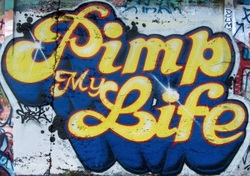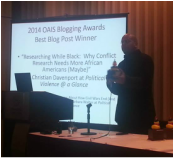
I had seen bars on windows, houses with gates as well as armed guards, even a dog or two at an opening of a fence, but Rwanda was quite different. For those that had and wanted to keep their stuff, there were armed guards with machine guns and bats with nails in them and the walls were eight to ten feet high, topped with pieces of broken glass as well as barbed wire. Now, these were not ordinary pieces of glass; they were immense shards, jagged and multicolored of about two by three inches a piece. They stretched upward from the wall like a thousand little knives, sharpened to pointed perfection.
The combination of all the factors struck me as bizarre but especially the last. Would not the barbed wire do so much damage that the glass really served no purpose, I thought? Well, yes, probably but this was not the point. Barbed wire was not part of the average Rwandan’s life whereas most would be familiar with what broken glass could do.
On entering a wealthy Rwandan home, one would see immense lawns, the shadow cast over the remaining wall – moonlight bouncing off the shards in between the beams of light like a prism of (in)security. The house was huge but sectioned off – more defensible spaces I suppose. We were led to the living room, greeted by the Ms. (not the Misses – different house, different story) who was adorned in a stunning shock of color and excess. While we could not see the rest of the house and were offered no tour, one could see eight doors on different sides of the room. We were in the center of the maze, very fitting I thought.
The house was elegant, tastefully sparse, decorated with a few masks, fabrics, paintings and pottery from different parts of Africa. Before sitting down, Mason, myself and Francis (another colleague from Maryland on the project) to see the different pieces of art a little closer. At some point, the Ms. excused herself (she needed to check something in the kitchen), leaving through one of the doors. We looked at the handmade crafts (the chairs, table and bowls) and then looked at each other. By any standard, this place was amazing. The Ms. blew in and out about five times in one door and out another. By the time we turned around the table was filled with food of all kinds – the ripest of fruit, the tenderest of meat, the sweetest of smells, some potato-like dish and something else that I had never seen. Very quickly, we knew that we were in for one hell of a meal. The four of us started eating out of the handmade bowls, later being joined by others – emerging from the different doors. Every now and then I glanced though the window and out to the wall, seeing someone with a machine gun walk past.
The next day we walked through some street in Kigali (the capital and home to the hotel in the movie Hotel Rwanda), closely navigating near the restaurant fronts whose guards kept the hundreds of beggars and money-changers at bay. One could see several hundred more in the cracks of the city (between buildings, in alley ways, on the hills). The street was a buzz with activity, as always. There were a million and one colors, smells, accents, faces and outfits. Some wore three-piece suits, some wore only an old piece of African cloth. Interestingly none wore shorts, despite the ridiculous heat. This was considered rude and left for Mizungus. Given the heat, being viewed as an outsider essentially sucked on every dimension but this one.
As we walked, three cars blew down the street, moving faster than anything else. One of them seemed to miss everyone by inches and then as quickly as it turned onto the street, it turned and moved toward the bank. Never slowing down, the car came to a screeching halt. Guards came up on either side and someone in a fabulous two-piece suit stepped out. If I had to guess, I would say Armani - all black, well-tailored. More guards showed up and now with about six people on either side the man walked toward the building. After he was inside, more guards came out, opened the door to the car and then three more individuals came out – one looking more important than the next. Greetings were made and then they all entered the building.
We asked our guide: who was that? To this, he only responded: “there are many in Rwanda with a great deal of money. That was obviously one of them.” We looked at each other and smiled.
Sitting down for lunch across the street from the bank, behind an open fence, three guards, two machine guns and a big stick, I tried to pinpoint my feelings. I had felt all this before but could not find the moment. Then I remembered. On one street in New York city, a homeless woman walked up to a bank deposit drawer, opened it, pulled down her pants, leaned back and furrowed her brow as she took a dump. At the same time, some guy with an equally beautiful suit and amazing briefcase under his arm walked out of the bank and into a limousine. The two most likely did not see one another but through me they occupied the same space and that cohesion as well as tension was tremendously unsettling. How could the two exist in the same space? What was I supposed to do with that information? How was I supposed to ignore it? Why was I allowed/guided to see it? How could such stark differences exist? Did they? How could the car pass through the crowd like a ghost? Which one was dreaming – the one or the other? Did it run through the crowd or over it and I just was not able to see the poorer victimized? What would happen if the bars were not there or the guards or the glass? Would there be some Hobbesian “free for all”? Was I not seeing one already?
Too much thinking. Where the hell is my tea?

 RSS Feed
RSS Feed
